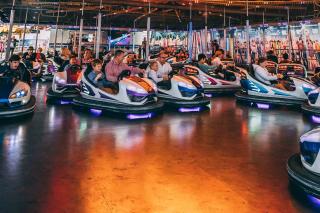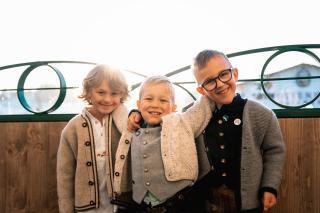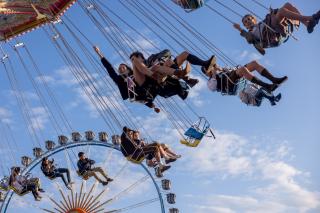Bumper cars: a loud and colorful childhood dream
Bumper cars are a classic at every folk festival – and also at the Oktoberfest. Here, for the first time, parents let their children take the steering wheel, and the older kids can impress their Oktoberfest acquaintances with rapid maneuvers.

What’s special: ramming without remorse
Driving without a license, collisions without consequences, no speed cameras. Bumper cars have always exerted a magical attraction at folk festivals – especially on young people. After all, many things are allowed on the approximately 30 by 15-meter driving surface that are forbidden when driving on the road (for good reason). In Germany, the electrically powered bumper cars have been racing around the parquet since 1926; the original idea – as is often the case – came from America. At the beginning of the 20th century, the trend theme of “automobiles” was being brought to amusement parks; on Coney Island in New York, the first ancestor of today’s bumper car was said to have been on display from 1906, but with cars still driven on collision-free rails. In 1938, the Distel family came to the Oktoberfest with their bumper cars, the first ride of this kind at that time.
Bumper cars: wild ride with the kids or your Oktoberfest crush
Very young passengers should not ride in a bumper car, even if it is mandatory for children to fasten their seat belts. After all, it can sometimes get a bit rough when the vehicles and their rubber bumpers all clash with one another. More often than parent-child duos, however, you’ll see young people rushing around in the 30 little cars anyway – either alone or arm in arm with their newest Oktoberfest friend. The wild ride is loudly commented on by friends or acquaintances from the edge of the road, and the disco music sound and the storm of color from around 100,000 LED lights ensure that the bumper cars are a popular meeting place, especially for the younger generation. Pretty much disco and driving fun in one – and all this with much looser alcohol limits than on public roads.
For backseat drivers: when the bumper car became automatic
Until 1957, chips were first bought at the cash desk and then collected by the bumper car staff for each new round – as is still the case today on smaller children’s carousels. Then, the Krefeld operator Bruno Tusch introduced the “automatic scooter.” Distel brought the scooter with chip slot to the Oktoberfest in 1958. For the operators this means fewer personnel and more laps per hour, and thus lower costs with higher turnover.

